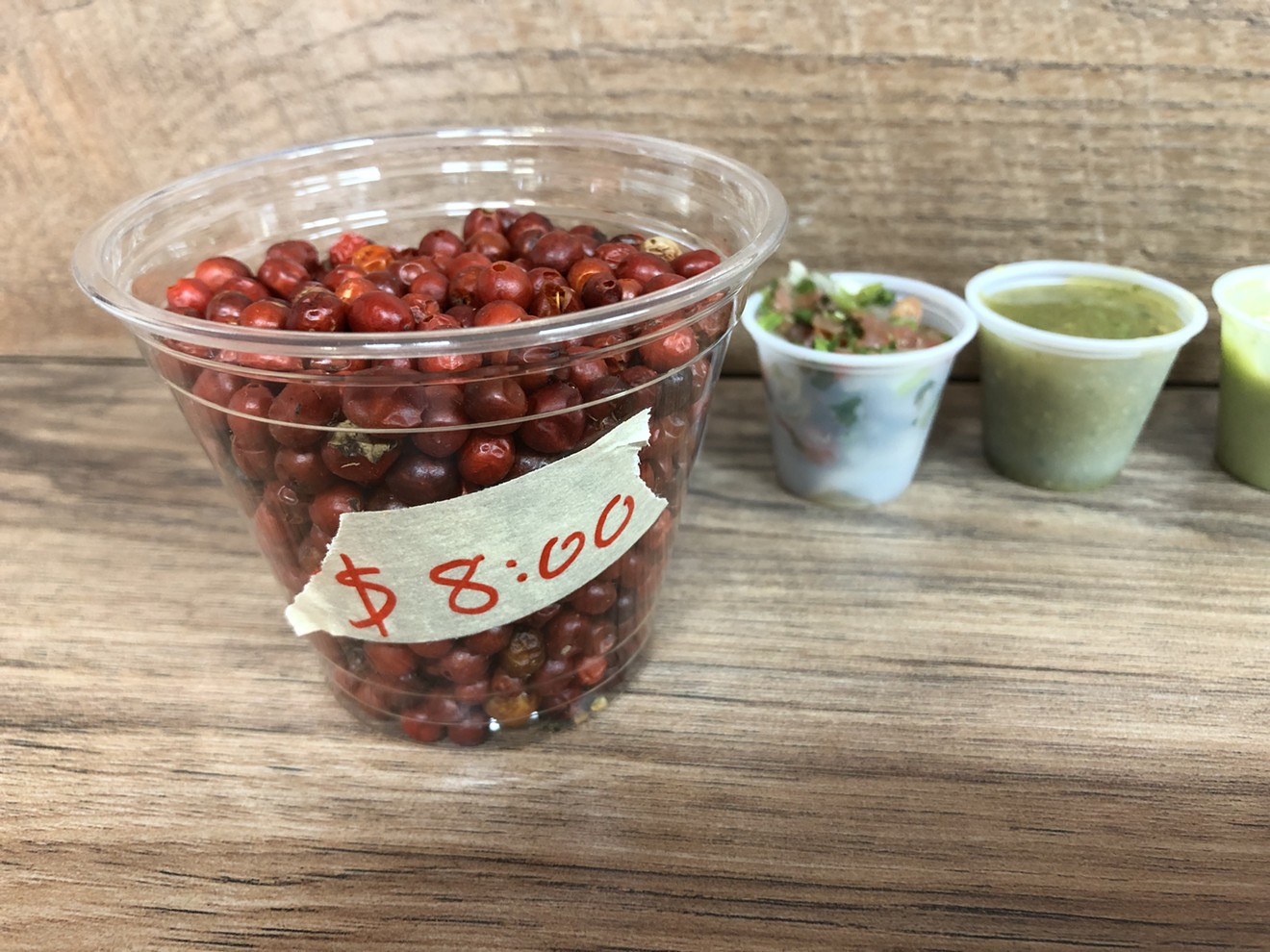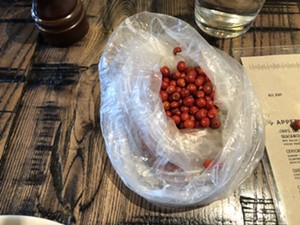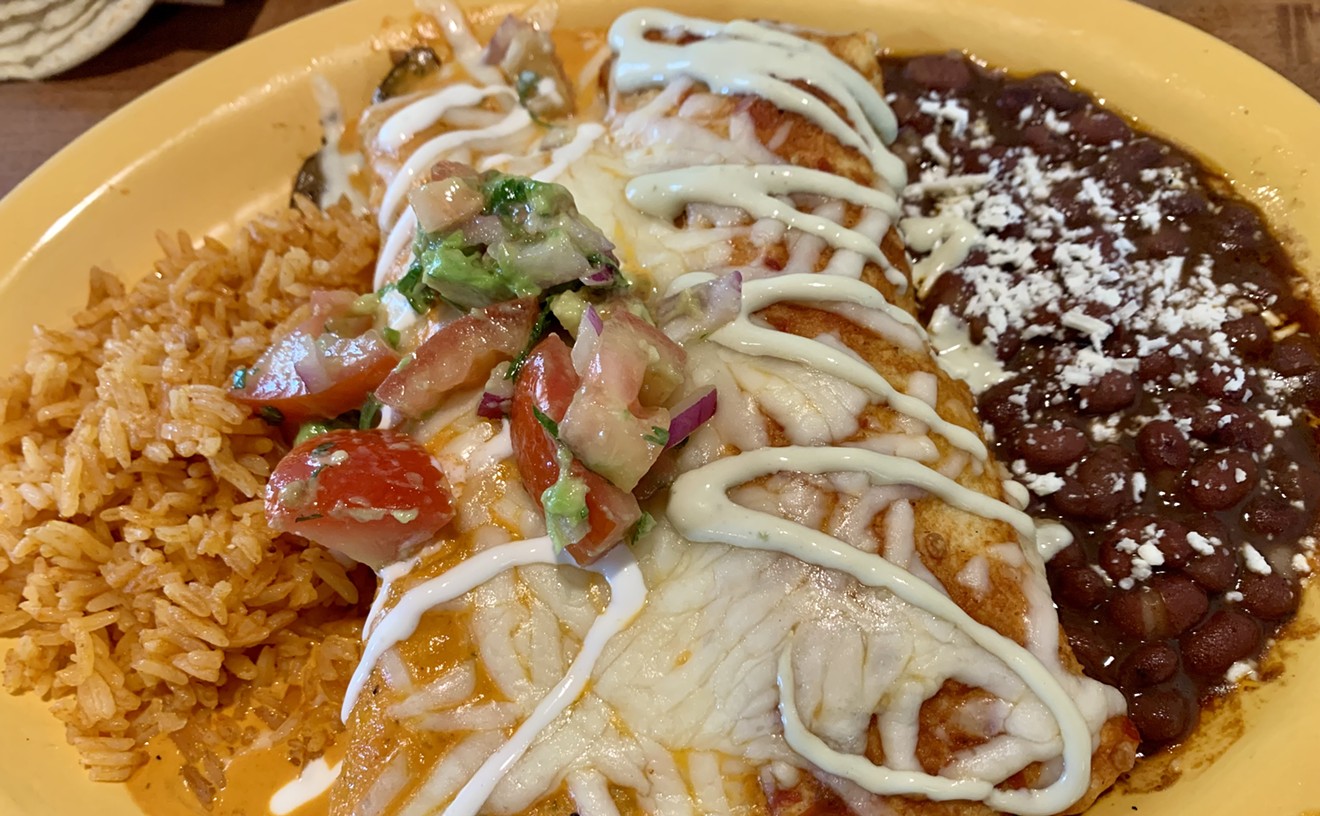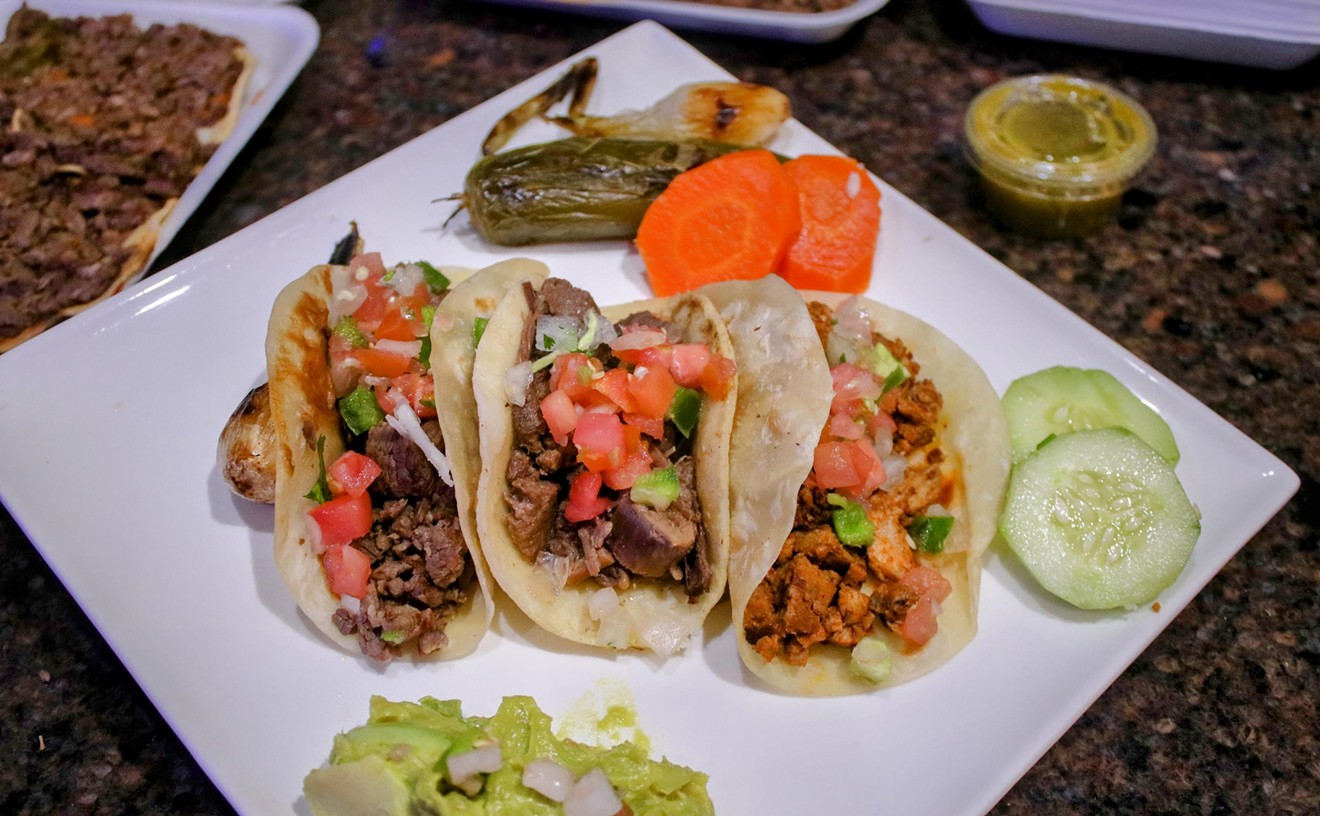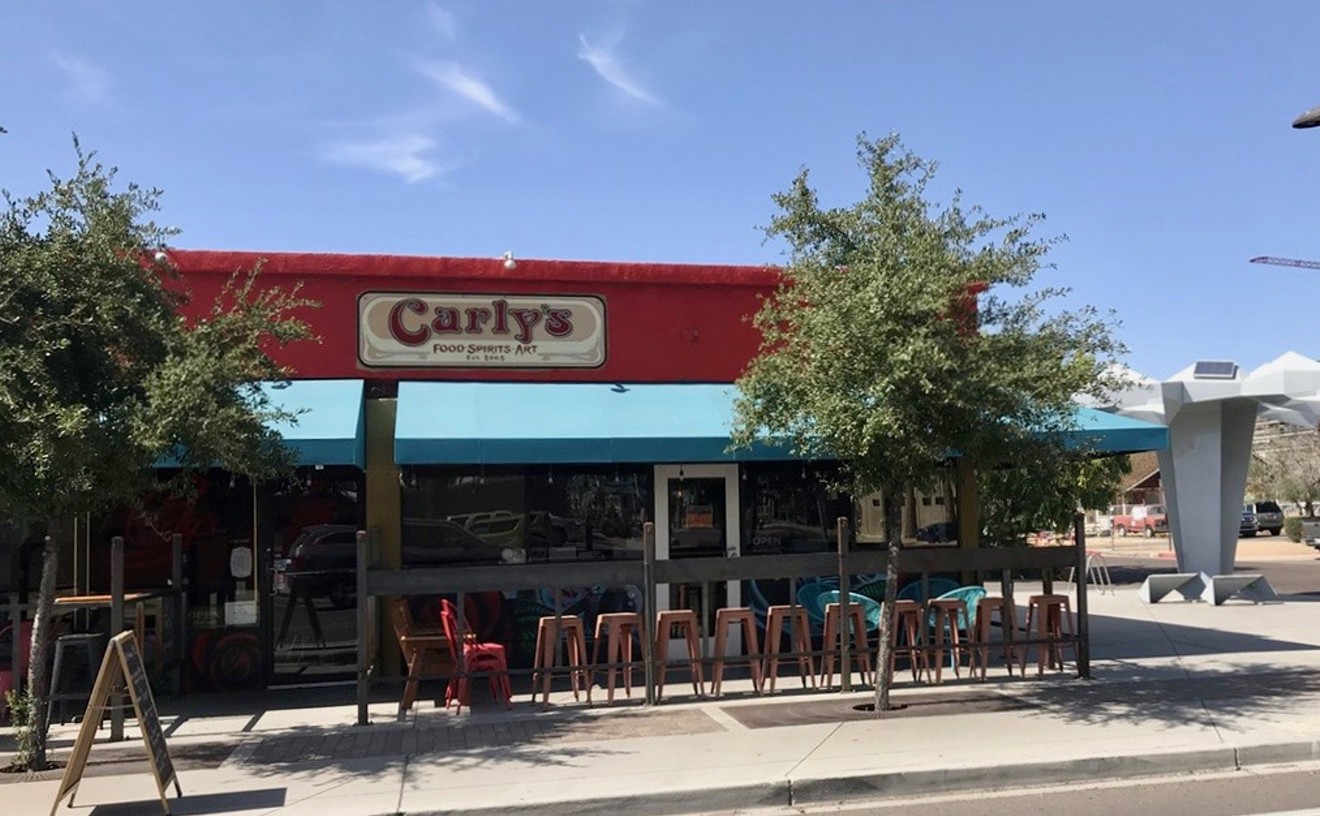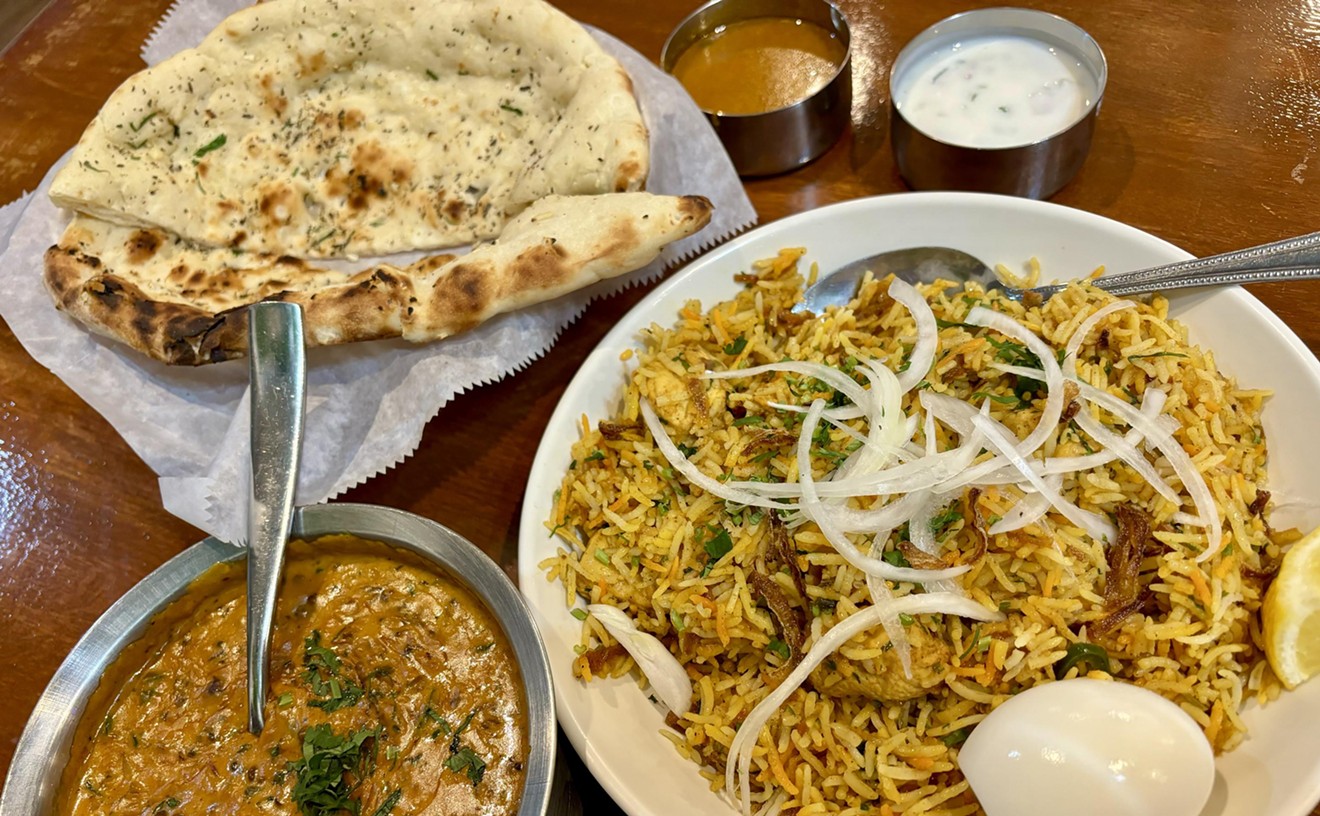Rene Andrade plops $4,000 in peppers onto a table at Ghost Ranch, the south Tempe restaurant where he is head chef. The peppers are small and round, lacking the long, tapering shape of jalapeños or serranos. They look more like holly berries, the tiny red orbs you see on green garland around Christmas. Though minuscule, the peppers pack a mighty punch. They are one of Arizona’s great foods: the chiltepin.
And though you can grow them here, Andrade just got back from a special trip to Mexico for wild peppers.
“This is the pepper I grew up with,” says Andrade — a native of Nogales, Mexico — over his chiltepin stash dried from late 2018 harvests. “This is the pepper that was in my life forever. I ate it on everything. I put it on everything — salsa, ceviche, carne asada, drinks.”
During his childhood, Andrade would often travel to his family ranch in Baviácora, Sonora. On the ranch, where Andrade’s extended family still raises animals and crops, wild shrubs begin to show color bursts in fall, when their spicy fruit turns a florid red.
“In October, November, December, you see the mountains, bro — they start turning red,” Andrade says. “I’m not kidding you. I am not kidding you. It’s so impressive. Because of the pepper, they start turning red.”

Rene Andrade at Ghost Ranch, with the aguachile dish he sold on weekends as a 13-year-old in Sonora.
Chris Malloy
Sonora is just one chief place the mercurial pepper grows. The other is southern Arizona.
The pepper was known to the Mayans and O’Odham, used for food and medicine. Though chile peppers are indigenous to the New World, the chiltepin is the only wild chile native to the United States. (Later, peppers like the Carolina Reaper arose in the United States, but as a result of breeders' crossing; the Reaper came from a cross between the Red Savina and ghost pepper.)
The chiltepin is often considered the “mother,” the ancestor of all other chile peppers we know today. And it is much better than more common peppers. It has an intense, lemony, almost tropical brightness before its high-throated heat flares, burning with depth and gentle fury, up to 20 times hotter than a jalapeño.
And though on margins of metro Phoenix’s culinary scene, the chiltepin is helping to define our food culture.
Despite its virtues, the pepper remains something of an outsider here (excepting the Sonoran Mexican eateries that use it in preparations for salsas, ceviches, and aguachiles). The chiltepin is expensive and hard to find. You are much more likely to come across its descendants.
An obstacle, too, is that the pepper prefers to live and die without human intervention. Farmed chiltepin crops regularly fail in part or in whole, and harvests produce fruit that pale beside the starburst wild version.
The local non-adoption of the chiltepin vexes those who love the pepper, like Andrade. If he had his way, both farmed and wild chiltepines will be used more.
“These are super-fruity, like super-fruity,” he says of the gnarly, wild chiltepines from his family's ranch. These, like others, are spread by birds. “Around where the birds eat them, there was a lot of fruits, a lot of berries and peaches. So the birds were eating a lot of berries and a lot of that, you know. So it developed into the pepper.”
He knifes open a bag, cups a double handful, and inhales. “This smells fresh and fruity and so amazing!”
Like most other very hot peppers, the chiltepin is more than just heat. The appeal of the world’s hottest peppers is rooted in many things, one being the tiny beautiful flavors that flash before the heat strikes. A pepper might bring notes of smoke, cinnamon, and citrus before the tidal wave of fire. Good hot sauce makers try to pull out these flavors.
Some of the hottest peppers have this flashbang front-end ephemeral beauty, including the Carolina Reaper and Trinidad Moruga scorpion. Though the chiltepin brings a bright heat that rapidly blooms to its 50,000 to 100,000 Scoville Heat Units (SHU), it is technically cooler than a “superhot” pepper. But it has the same early wonder.
Actually, it has more wonder. The fruit and brightness of the pepper are astounding, even eye-opening. The sharp heat seems to be clean and elegant, almost balanced.
The chiltepin’s superlative character has drawn a snowballing cadre of supporters. “It’s bright and packs a giant bang of flavor,” says Silvana Salcido Esparza of Barrio Cafe, who sources the pepper from a Sonoran forager. “I personally think it’s the most flavorful of all chiles.”
Esparza uses them in aguachile and posole. Charleen Badman of FnB grows them in her garden and uses them on top of fried eggs with grilled asparagus and polenta. Chris Bianco describes chiltepines as “hot and delicious” and “much more powerful than their heat index.”
“I’ve been a pepper fan for a long time,” says Matt Carter, chef behind The Mission and other Valley restaurants. “Before we opened The Mission nine years ago, I probably spent six or seven years on the products." He tried obscure peppers from Mexico, from Peru. “Throughout this whole time, I was not aware of our local pepper, the chiltepin.”
"I spent years trying to get this obscure mushroom from China, and now I'm getting it," Carter says. "That's cool, but not as cool as this pepper." On an earlier rung of his professional ladder, Andrade worked for Carter, and used to give him peppers from the family ranch.
Which is incredibly generous. Because though you can order pepper seeds from entities like Native Seeds/SEARCH, now and then find chiltepines at farmers markets in Phoenix and Tucson, or spot pint-sized cups at restaurants like Tacos Huicho when the season is right, the best way to get them is wild.

Andrade juiced seven limes and crushed eight chiltepines to make his family's aguachile.
Chris Malloy
That's what makes what Andrade is doing with the $4,000 in peppers on the table even more amazing. He's giving them out for free.
“It’s not about money; it’s about giving,” he says. “I don’t want this to die. I don’t want something so beautiful that has been in my life so long to die. Nowadays, people molecularize and play with the pepper and grow it. It’s not as unique as this. There’s not as much love into it.”
He is giving wild chiltepines to metro Phoenix chefs in the hopes that they’ll catch the love. He wants to create demand, so that the pickers on both sides of the border have incentive to keep picking. So that the pepper can sluice from our margins closer to the mainstream. Andrade’s family used chiltepines with abandon; they were part of the dish (aguachiles) he sold at age 13 on weekends for 280 pesos — the dish that made him want to be a chef in the first place.
The little red balls have gastronomic range and ancient history, spunk and character, and they refuse to grow outside of the fantastic habitat we inhabit. They are one of the world’s prime chiles, a zenith Sonoran Desert ingredient that has the capacity to elevate the local food scene if embraced, and they're all but in our backyards.
So Andrade is sharing the wealth, and spreading the fire.

